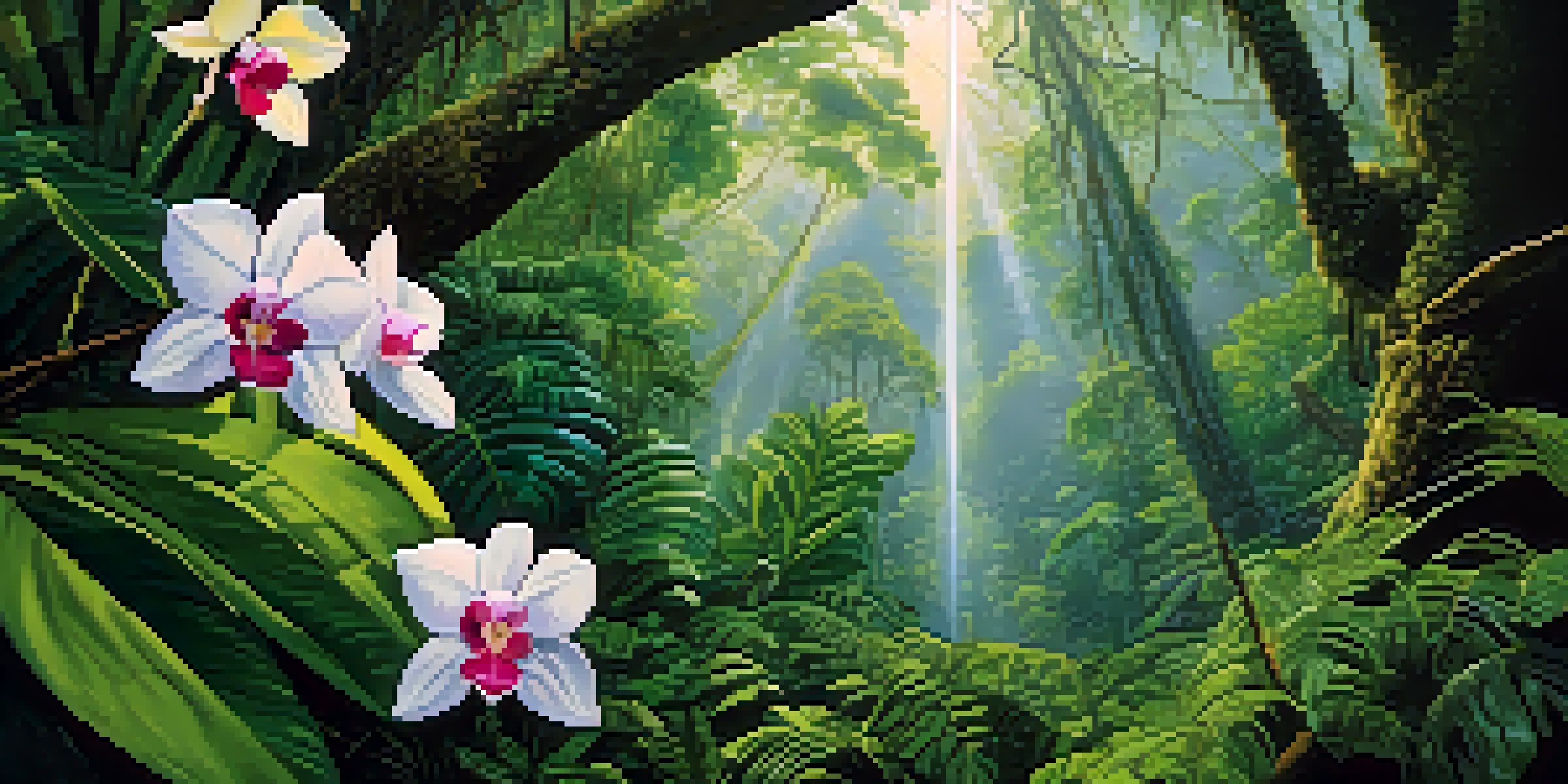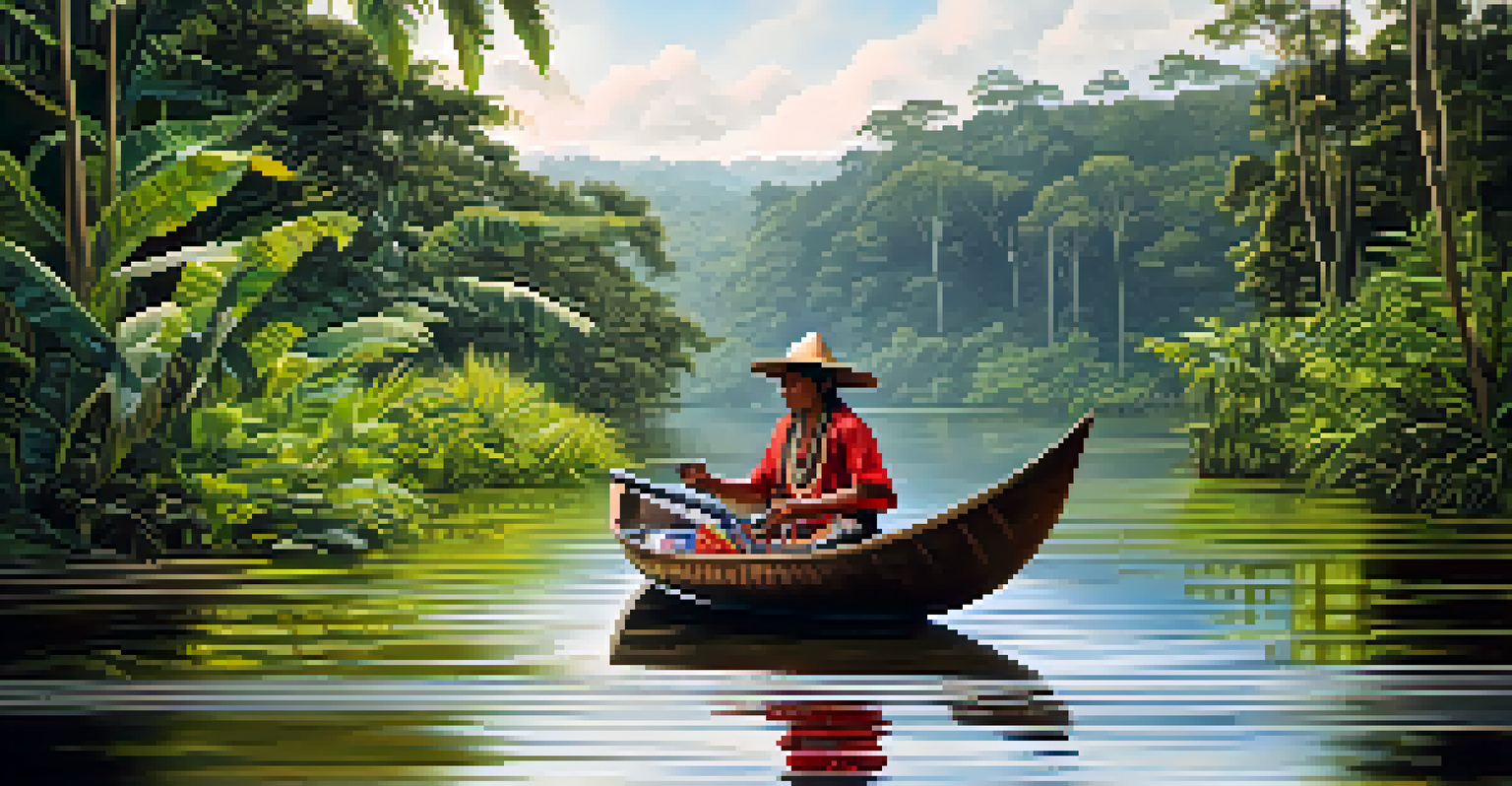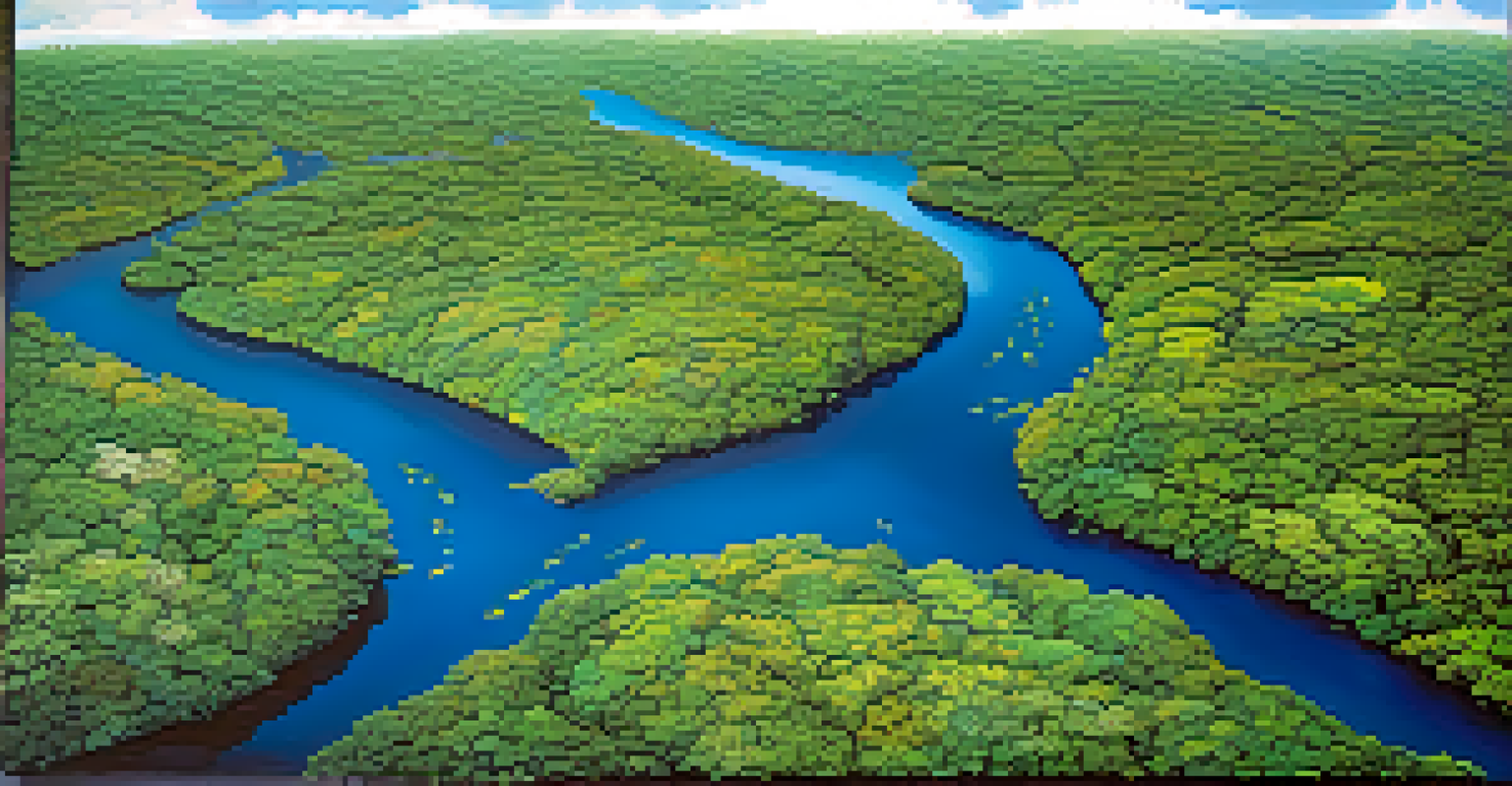Amazon Rainforest: Biodiversity and Conservation in Peru

Introduction to the Amazon Rainforest in Peru
The Amazon Rainforest, often referred to as the lungs of the Earth, plays a crucial role in global ecology. Peru's portion of this vast rainforest is one of the most biodiverse areas on the planet, housing thousands of species of plants, animals, and insects. With its intricate ecosystems, the Amazon is not merely a forest; it’s a living laboratory of evolution and natural beauty.
The rainforest is a treasure trove of potential discoveries, with many plants yet to be studied for their medicinal properties.
Peru's Amazon is unique because it includes a mix of rainforest, wetlands, and river systems, each contributing to its rich biodiversity. This region is home to many indigenous communities who rely on the forest for their livelihoods, making conservation efforts even more complex. The interdependence of human and environmental health in this area highlights the importance of sustainable practices.
As we delve deeper into the Amazon's biodiversity and conservation efforts, we’ll uncover the challenges it faces and the initiatives that are helping to protect this vital ecosystem. Understanding the balance between human activity and natural preservation is essential for ensuring the future of this incredible rainforest.
Diverse Flora and Fauna of the Amazon Rainforest
The Amazon Rainforest in Peru is home to an astounding array of flora and fauna. From towering trees that reach the sky to vibrant orchids and medicinal plants, the variety is staggering. It is estimated that the Amazon contains about 40,000 plant species, which provide habitat and food for countless animal species, including jaguars, sloths, and over 1,300 bird species.

The diversity doesn't stop at plants and mammals. The rainforest also hosts millions of insects, many of which have yet to be classified. This incredible variety is not just fascinating—it plays a crucial role in maintaining ecological balance. For example, many plants depend on specific insects for pollination, while predators like the jaguar help control herbivore populations.
Amazon's Biodiversity at Risk
The Amazon Rainforest is facing severe threats from deforestation, climate change, and human activities, endangering its rich ecosystems.
Unfortunately, this delicate balance is threatened by deforestation, climate change, and other human activities. As we explore conservation efforts, it’s essential to recognize how protecting biodiversity is vital not just for the animals and plants, but for the health of our planet as a whole.
Threats to Biodiversity in the Amazon
Despite its rich biodiversity, the Amazon Rainforest faces numerous threats. Deforestation, primarily driven by agriculture, logging, and mining, has led to significant habitat loss. As trees are cut down or degraded, the unique ecosystems that depend on them are put at risk, causing a ripple effect through the food chain.
Indigenous communities are not just victims of environmental destruction; they are the best protectors of the forest.
Additionally, climate change poses a significant threat to the Amazon's delicate balance. Rising temperatures and changing precipitation patterns can disrupt plant growth and animal migration, leading to declines in species populations. The combination of habitat loss and climate change creates a precarious situation for the rainforest's inhabitants.
Human activities also introduce pollution and invasive species, which further exacerbate the challenges faced by this biodiversity hotspot. Understanding these threats is crucial for developing effective conservation strategies that can help mitigate their impact and preserve the Amazon for future generations.
Indigenous Peoples and Their Role in Conservation
Indigenous communities in Peru play a vital role in the conservation of the Amazon Rainforest. Their traditional knowledge and sustainable practices have helped maintain the ecological balance for centuries. By living in harmony with nature, these communities have developed methods of agriculture, hunting, and resource management that prioritize sustainability.
Many indigenous groups are now at the forefront of conservation efforts, advocating for their rights and protecting their ancestral lands from exploitation. By collaborating with environmental organizations, they strive to ensure their voices are heard in discussions about land use and biodiversity preservation. This partnership is essential for creating effective conservation strategies that respect both the environment and the needs of local communities.
Indigenous Peoples as Conservationists
Indigenous communities play a crucial role in preserving the Amazon through their traditional knowledge and sustainable practices.
As we explore conservation in the Amazon, it's important to recognize the deep connection between indigenous cultures and the forest. Their stewardship not only protects biodiversity but also enriches the cultural heritage of the region, highlighting the importance of preserving both nature and traditions.
Conservation Initiatives in Peru's Amazon
Various conservation initiatives are underway in Peru to protect the Amazon Rainforest and its biodiversity. One significant effort is the establishment of protected areas and national parks, which serve as sanctuaries for wildlife and crucial ecosystems. These protected regions help to mitigate the impacts of deforestation and allow for the regeneration of damaged habitats.
In addition to protected areas, community-based conservation programs empower local populations to manage their resources sustainably. These initiatives encourage responsible land use and promote eco-friendly practices that benefit both the environment and the local economy. By involving local communities, these programs often yield better results than top-down approaches, as they foster a sense of ownership and responsibility.
Moreover, international collaborations and funding are increasing to support conservation efforts in the Amazon. Organizations are working together to implement projects that focus on reforestation, wildlife protection, and environmental education. Together, these initiatives offer hope for the future of Peru's Amazon and its incredible biodiversity.
The Importance of Biodiversity for Humanity
Biodiversity in the Amazon Rainforest is not just essential for the ecosystem; it also provides numerous benefits to humanity. Healthy ecosystems contribute to clean air and water, regulate the climate, and provide resources for medicine and agriculture. The rainforest is a treasure trove of potential discoveries, with many plants yet to be studied for their medicinal properties.
Furthermore, biodiversity enhances ecosystem resilience, allowing nature to adapt to changes and recover from disturbances. This resilience is crucial in the face of climate change, as diverse ecosystems can better withstand and bounce back from environmental shocks. Protecting biodiversity is, therefore, not just an environmental issue; it’s a matter of human survival.
Conservation Initiatives in Peru
Various conservation initiatives, including protected areas and community-based programs, are actively working to safeguard the Amazon's biodiversity.
As we reflect on the relationship between biodiversity and human well-being, it becomes clear that our fates are intertwined. Conserving the Amazon and its rich biodiversity is an investment in our future, ensuring that both nature and humanity can thrive together.
How You Can Help Protect the Amazon Rainforest
Protecting the Amazon Rainforest may seem like a daunting task, but there are many ways individuals can make a difference. First, consider supporting organizations dedicated to conservation efforts in the Amazon. Donations or volunteering can help fund vital projects that protect biodiversity and support indigenous communities.
Additionally, making sustainable choices in your everyday life can contribute to the larger movement of conservation. This includes reducing plastic use, supporting sustainable products, and being mindful of the environmental impact of your purchases. By choosing to buy from companies that prioritize sustainability, you can help reduce demand for products that contribute to deforestation.

Finally, spreading awareness about the importance of the Amazon Rainforest and its threats can amplify the message. Engaging in conversations, sharing information on social media, and encouraging others to take action can create a ripple effect, inspiring more people to care about this crucial ecosystem. Every small action counts, and together, we can help ensure a brighter future for the Amazon.